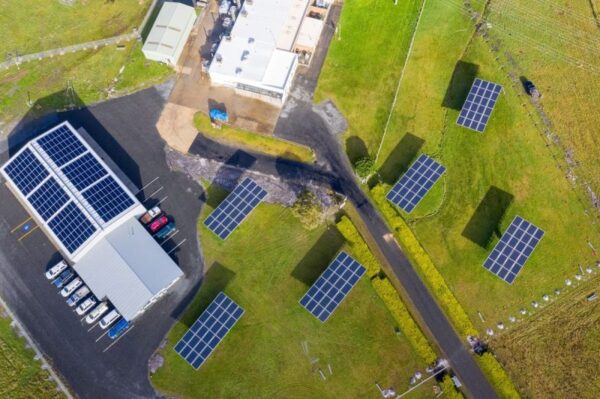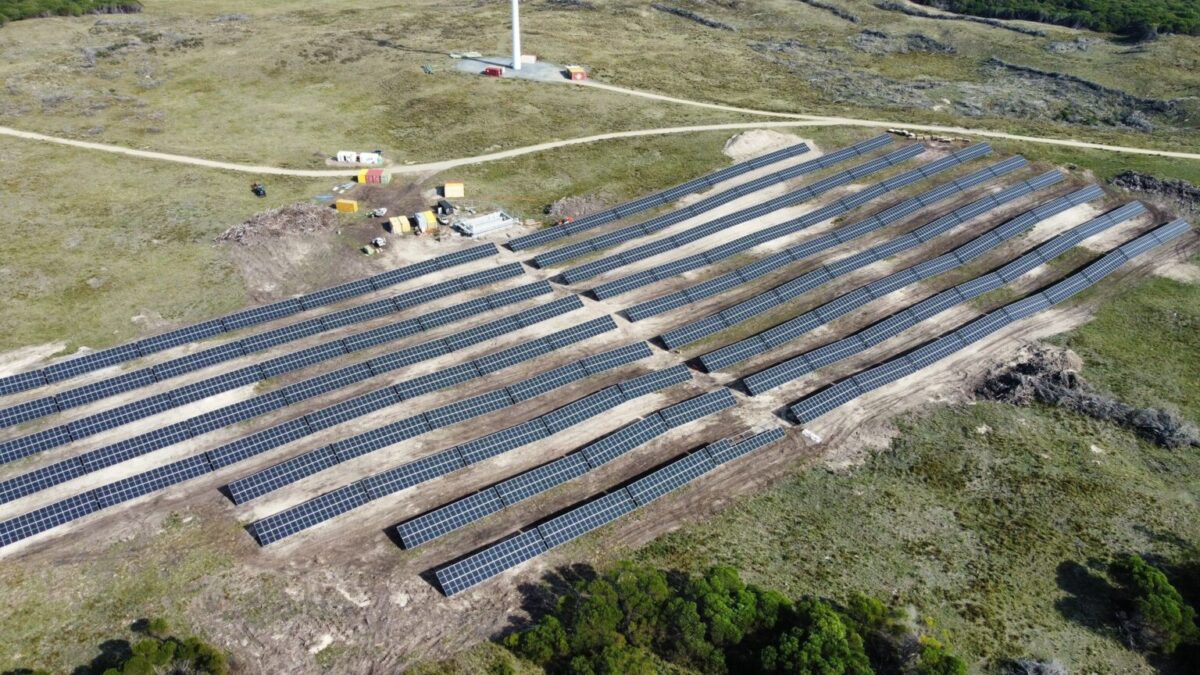Hydro Tasmania said the new AUD 3.35 million ($2.22 million) King Island solar farm, comprising about 5,000 panels spread across an almost 6 hectare site, will increase the amount of renewable energy produced on the island and cut diesel consumption by 300,000 liters per year.
The government-owned utility said the 1.5 MW plant, delivered by Queensland-based GEM Energy, will soon be connected to the local grid, forming part of the existing King Island Renewable Integration Project (KIREIP).
Installed over several earlier phases, the off-grid power system includes another 470 kW of utility- scale solar generation and 2.45 MW of wind backed by a 3 MW/1.5 MWh battery energy storage system. The system also includes two 1 MVA flywheels that aid system security and stability, a 1.5 MW dynamic resistor to manage surplus renewable generation, and an aggregated customer demand response system. The island is also home to four diesel generators with a combined capacity of 6 MW.
Hydro Tasmania CEO Ian Brooksbank said the new solar plant is part of a long-term plan for King Island, which is home to about 1,700 people, to transition away from diesel entirely.
“Over the past 10 years, we’ve slashed diesel consumption on King Island by 50%. That saves 2.1 million litres of diesel and cuts carbon emissions by 5,700 tonnes a year,” he said. “The new solar farm will save an additional 300,000 liters in diesel and 800 tons in carbon emissions annually and deliver even greater reliability in electricity supply for local homes and businesses.”
King Island already draws about two-thirds of its annual electricity from renewables, but Hydro Tasmania said the KIREIP system is capable of 100% renewable operation – the only megawatt-class off-grid system with this capability in the world today.
Brooksbank said King Island, which installed its first wind turbines 25 years ago, has become a renewable energy blueprint for isolated off-grid communities in Australia and around the world.
“This type of hybrid, renewable energy system is also a model for the national electricity market,” he said. “How we integrate wind, solar and storage, while reducing fossil fuels and maintaining grid stability, is an important lesson as the nation transitions to renewable energy.”

This content is protected by copyright and may not be reused. If you want to cooperate with us and would like to reuse some of our content, please contact: editors@pv-magazine.com.




By submitting this form you agree to pv magazine using your data for the purposes of publishing your comment.
Your personal data will only be disclosed or otherwise transmitted to third parties for the purposes of spam filtering or if this is necessary for technical maintenance of the website. Any other transfer to third parties will not take place unless this is justified on the basis of applicable data protection regulations or if pv magazine is legally obliged to do so.
You may revoke this consent at any time with effect for the future, in which case your personal data will be deleted immediately. Otherwise, your data will be deleted if pv magazine has processed your request or the purpose of data storage is fulfilled.
Further information on data privacy can be found in our Data Protection Policy.